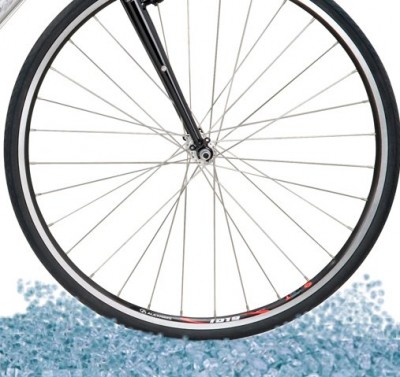One problem with riding a bicycle on roads designed for cars is contending with debris carelessly strewn about. Too often, debris accumulates on the far right-hand side of the road, where cars infrequently travel, but where cyclists find a home. No matter how carefully a cyclist scans the road, debris isn’t always obvious; or, if it is, a car stands in the way of steering around it.
There is so much to watch for. Cars, buses, trains, and heedless cyclists detract from an otherwise danger-free roadway. Pedestrians are a source of consternation too. The last thing on a cyclist’s mind is road debris. That’s how split-second reaction time can be insufficient for avoiding disaster. What’s a cyclist to do?
Knowing what’s there is key to keeping your cool. You look ahead and the road appears clear. You listen to the cars passing on the left. They are too close, you think. It’s tempting to give them the finger. Who told them they owned the road?
You swerve to avoid a swinging car door. This time, you yell at the driver to look before opening the door. It helps to remind them, in a stern way, that they almost killed someone. Will this influence their future behavior? Probably not. But it will make you feel justified.
Approaching an intersection, no traffic is visible. It’s tempting to slow down and then blow through the intersection. Will anyone see you? Maybe, maybe not. You’re torn between fluid cycling and safety. You might receive a citation – just like a car. Remembering the car door, you consider how you will look to motorists whose attention is drawn to your neon clothes. Those colors were meant to keep you from getting mowed down, not busted for illegal activity. You stop.
As soon as the light turns green, you begin to move with the flow of traffic. Everything looks fine. You’re about to safely cross the intersection when a pedestrian, talking on a cell phone with one hand and drinking a cup of Starbucks coffee with the other, steps out in front of you. You squeeze your brakes while trying to steer around this oblivious creature. “Damn it!” you yell. “Watch where you’re going.” Your heart pounds as you recover from an adrenaline rush released by a close call.
Back on open road, you heave a sigh of relief. No cars in sight. You increase your speed: the worst part of town is behind you. A horn honks loudly, making you jump. An out-of-control driver is exercising his right to engage in road rage. No one did anything to him, other than not allowing him to have his way.
Just then, you notice the sun sinking in the sky. It hits your eyes at a blinding angle. Instinctively, you raise your left hand to shield your eyes. A car pulls out of a parking space, not noticing you. Anticipating this move was impossible with the sun rendering your vision next to useless. Fortunately, the driver sees you at the last minute and slams on his brakes.
You recover your composure. It’s getting darker. Shadows are everywhere, making the road appear uneven. It doesn’t matter: you’re almost home. Cars pass in single file to the left. You barely pay attention to them now that there’s a shoulder to ride along.
Abruptly, something appears in your path. What is it? Is it sharp? Can it be ridden through? You try to slow down, but there is traffic approaching. Only a few seconds to decide. Go straight, swerve right into gravel, swerve left directly into traffic?
Getting closer, the debris starts to look tire-piercing. It’s extending into the roadside. There’s no room to go around it on the right. Should you try to ride down the steep embankment, onto the grass, with your narrow tires? You’re bound to lose control. What to do: there’s no time to think. Just react and hope for the best. Swerving sharply to the left, you put yourself in the way of traffic. If only you’d had enough time to signal. Your muscles are poised for quick maneuvers.
Get back to the right before a car clips you, you tell yourself. You guide your bike back around the edge of the debris when, suddenly, the front wheel drops into an unforeseen chasm in the road. Pulling up on your handlebars with all your strength, you try to free the wheel from this hollow. Forward momentum spins you around. Your wheel is stuck. Your body begins to move away from the bike. You’re falling. Soon you’ll hit hard pavement, hoping to avoid a car’s course. You slide on your shoulder until friction brings you to rest.
Nothing has hit you. You’re OK. You look back at the debris and broken road behind you.
How could you not have seen it coming?
It’s the panic factor.




